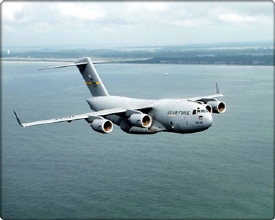Sep 9 2008
The Boeing Company , industry teammates and the U.S. Missile Defense Agency on Sept. 7 achieved a major milestone in the development of the Airborne Laser (ABL) missile defense program by firing a high-energy chemical laser onboard the ABL aircraft for the first time during ground testing at Edwards Air Force Base, Calif.
 Boeing Integrated Defense Systems (IDS) combines weapons and aircraft capabilities, intelligence and surveillance systems, communications architectures and extensive large-scale integration expertise.
Boeing Integrated Defense Systems (IDS) combines weapons and aircraft capabilities, intelligence and surveillance systems, communications architectures and extensive large-scale integration expertise.
"The achievement of 'first light' onboard the Airborne Laser aircraft is a key milestone for the ABL team," said Scott Fancher, vice president and general manager of Boeing Missile Defense Systems. "The team did an extraordinary job preparing ABL for this important test. The program remains on track to reach the missile shoot-down demonstration planned for 2009."
"The start of laser firings marks the completion of a 10-month effort to install and integrate the high-energy laser and prepare it for testing," said Mike Rinn, vice president and program director of ABL. "Using Lean process improvements, a joint contractor team reduced laser installation time on the aircraft to about a third of the time required when the laser was installed in the system integration laboratory at Edwards."
ABL's high-energy laser will undergo a series of additional ground tests, building toward lethal levels of duration and power. The laser first will be fired into an onboard calorimeter, which captures the beam and measures its power. The laser beam then will be sent through the beam control/fire control system, exiting the aircraft through the nose-mounted turret. To prepare for the tests, modifications to the ABL hangar at Edwards were completed, and additional integration testing of the beam control/fire control system was completed.
Ground firings of the laser will be followed by flight tests of the entire ABL weapon system, culminating in an airborne intercept test against a ballistic missile in 2009.
The program has amassed a series of accomplishments over the past several years. In 2005, the high-energy laser demonstrated lethal levels of duration and power in the system integration laboratory at Edwards. And in 2007, ABL completed numerous flight tests that demonstrated its ability to track an airborne target, measure and compensate for atmospheric conditions and deliver a surrogate high-energy laser's simulated lethal beam on the target.
Boeing is the prime contractor for ABL, which will provide speed-of-light capability to destroy all classes of ballistic missiles in their boost phase of flight.
The ABL aircraft is a modified Boeing 747-400F whose back half holds the high-energy laser, designed and built by Northrop Grumman. The front section of the aircraft contains the beam control/fire control system, developed by Lockheed Martin, and the battle management system, provided by Boeing.
Posted September 9th, 2008